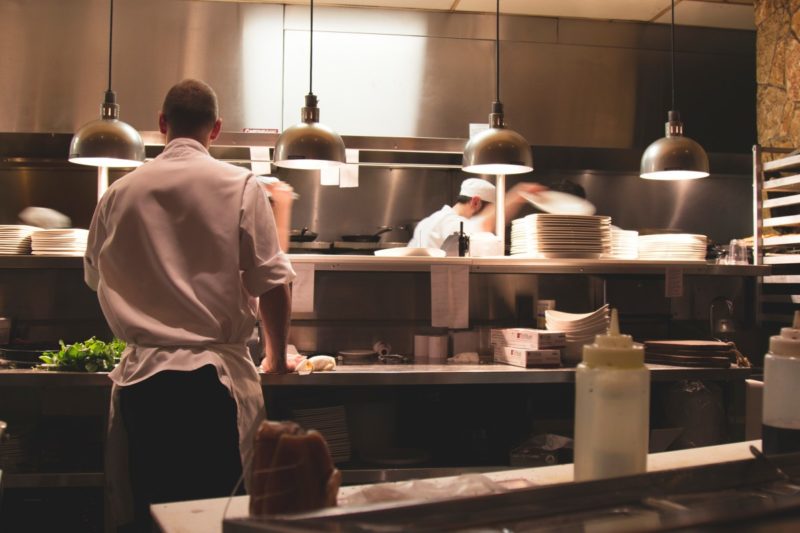Have you been struggling to know what is simmer on the stove? Look no further, because this article is going to answer your questions. To have a glimpse, it’s a technique used to control the heat; at the same time, it aims to soften your food. Aside from that, it’s the time when ingredients are added while cooking.
When learning to cook for a hobby or starting a new business, it can be tricky for food business owners. The recipe may not change that much, but what makes the difference is the way it is prepared.
It is essential to know the proper way to execute cooking methods. However, we understand that some of them can be confusing and not sure how you should do it. In this article, you are going to learn about simmering and more cooking techniques. So keep on reading to find out!
Importance Of Cooking Techniques
The techniques used when cooking can significantly affect the result. Most chefs or small food business owners believe that learning the proper cooking technique is more important than following the recipe. However, when you master a technique for the recipe, it can even improve the quality of the recipe or when something goes wrong in the middle of preparing it.
What Simmer Is On The Stove: Here’s How!
For some, it may be a little tricky to know what is simmer on the stove. The experienced cooks can eyeball when the recipe comes to a simmer, but it could be harder to distinguish for those who are only beginning—having specific things to look out for help determine when the recipe has come to a simmer.
Simmering is the method that uses moderate heat, and the purpose is to soften the food. This is also the part where you can put seasoning and other ingredients. Simmering on a stove should stay between 185° to 205°F. One easy way to distinguish it is that it should be gentle than a boil but more aggressive and bubbly than poaching.
Simmering requires it to be monitored as you need to keep it between those two extremities. You may use a kitchen thermometer to know the exact temperature stated above or look if it has reached the middle ground of boiling and poaching and let it stay that way until the dish has finished cooking.
Different Types Of Simmer
Simmering is for used recipes that need slow cooking through a liquid or to cook the liquid itself, whatever it may be. Such dishes include soup, stew, and meat that need slow cooking. Simmering allows the heat to slowly but surely go through the food. Delicate foods are suitable for this cooking method as boiling could break them apart.
#1. Slow simmer
This is the daintiest type of simmering. Very minimal bubbles should be seen rising to the top and some light steam. The temperature should be up to 185° F. There should not be much activity in the pot, and you should maintain the conditions for the time needed. This is good for dishes that require slower cooking, such as stocks. You may also be interested to know how hot can a stove get.
#2. Simmer
For a steady simmer, the temperature can be between 185° to 205°F and never more than that. This is used for recipes that have a more thick liquid like sauces, soups, and stews. There should be some more bubbling seen on top but not aggressive.
#3. Rapid simmer
This is simmering that almost reaches a boil. The temperature for this should be around 205° F. The bubbling can be more aggressive but should be pretty small in size. You would know when you are doing a rapid simmer or a boil by observing the bubbles. Boiling creates more giant bubbles that move around the food faster, which is not ideal when you need slow cooking.
Different Cooking Methods
When cooking, you will need to learn the cooking methods. Sometimes, merely following the recipe doesn’t cut it. Instead, you will need practice to fully reap the effects of these cooking methods on your dish.
#1. Baking
This cooking method is used for pastries, bread, and dessert. This process keeps the moisture in the food while it “cooks” or bakes the outside till it goes brown. Although this is very basic, pre-heating the oven and keeping an eye on the timer is essential for the process.
#2. Frying
This is cooking food using cooking oil or fat. This results in crunchiness and crispy recipes. It is good to pair with different sauces and dips. This is a high-heat process of cooking. You may be interested to know how to adjust the flame on a stove.
#3. Roasting
Another high-heat form of cooking allows the moisture to be kept within the food. It is like baking but mainly used on meat rather than pastries and desserts. The outside will be cooked to a dry brown, but the inside will be moist. My friends, it may also be helpful to read how to clean a burnt stove in case.
#4. Broiling
This is a cooking method where your source of heat is from the top. You can adjust the heat setting from your appliance as this is another method that can give off intense heat. You can quickly burn your food through this, so it should be supervised. Learn more about grilling and boiling.
Conclusion
Now you know what is simmer on the stove, we hope you practice well on mastering this. Not only that, but you also know now about other cooking techniques used for different recipes. We hope you share this knowledge with other prospecting cooks. Thank you!

